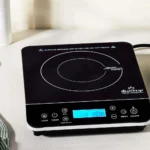
The first vacuum cleaner was invented in 1901 by Hubert Cecil Booth, a British engineer: Hubert Cecil Booth is credited with inventing the first powered vacuum cleaner. His invention was a large machine powered by a horse-drawn gasoline engine. The vacuum cleaner used suction to remove dirt and debris from floors and surfaces. It was primarily designed for commercial use, and due to its size, it had to be parked outside the building being cleaned.
Booth’s vacuum cleaner was powered by a horse-drawn gasoline engine and was so large that it had to be parked outside the building being cleaned: Booth’s vacuum cleaner was a massive machine that required an external power source. It was equipped with a gasoline engine, which was commonly used at the time. Because of its size and noise, the machine had to be stationed outside the building being cleaned, and long hoses were used to connect it to the cleaning area indoors.
The first portable electric vacuum cleaner was invented in 1905 by Walter Griffiths, a British engineer: Walter Griffiths, another British engineer, made significant advancements in vacuum cleaner technology by developing the first portable electric vacuum cleaner. Unlike Booth’s large machine, Griffiths’ invention was smaller and more practical for household use. It was powered by electricity, making it more convenient and easier to maneuver within indoor spaces.
In 1908, James Murray Spangler, an American janitor, developed a portable electric vacuum cleaner with a rotating brush and a pillowcase filter. He later sold the patent to William Hoover, who founded the Hoover Company: James Murray Spangler, a janitor from Ohio, invented a portable electric vacuum cleaner that incorporated several innovative features. His design included a rotating brush to agitate and loosen dirt from carpets and a pillowcase filter to trap the dust and debris. Spangler patented his invention and later sold the patent to William Hoover, who recognized its potential and founded the Hoover Company. This marked the beginning of Hoover’s dominance in the vacuum cleaner industry.
The term “vacuum cleaner” originated from the fact that early models used a vacuum or suction to collect dirt and debris: The term “vacuum cleaner” emerged due to the core principle of early models. These machines relied on creating a partial vacuum or suction to draw in dirt, dust, and other particles from the surfaces being cleaned. The suction force generated by the vacuum cleaner was instrumental in removing debris and contributing to efficient cleaning. Over time, the term became synonymous with the household appliance we know today.
The first vacuum cleaners were quite expensive, costing around $1,000 in the early 1900s, which is equivalent to approximately $30,000 in today’s money: When vacuum cleaners were first introduced, they were considered a luxury item and were priced accordingly. The cost of around $1,000 in the early 1900s was a significant sum, equivalent to a substantial investment in today’s currency. This high price point limited their accessibility primarily to wealthier individuals and commercial establishments.
The Hoover Company introduced the first upright vacuum cleaner in 1926, known as the “Hoover Model 700”: The Hoover Company, under the leadership of William Hoover, made a significant contribution to vacuum cleaner innovation. In 1926, they launched the Hoover Model 700, which was the first commercially successful upright vacuum cleaner. This model featured a motorized brush and improved suction power, providing efficient cleaning for both carpets and hard floors. The introduction of the upright design revolutionized the industry and set the standard for future vacuum cleaner models.
The first vacuum cleaner with disposable bags was introduced in 1927 by Hoover. It featured a disposable paper bag that could be easily replaced when full: In 1927, the Hoover Company introduced a groundbreaking feature to their vacuum cleaners—a disposable bag. The vacuum cleaner was designed to collect dirt and debris in a detachable paper bag that could be easily removed and replaced when full. This innovation eliminated the need for manual cleaning of cloth filters and improved the overall convenience and cleanliness of using vacuum cleaners.
The number of households in the United States that owned a vacuum cleaner increased from 9% in 1930 to 95% in 1950, highlighting the rapid adoption of this cleaning appliance: Vacuum cleaners experienced a significant surge in popularity and adoption in American households during the mid-20th century. In 1930, only 9% of households in the United States owned a vacuum cleaner, but by 1950, this number had skyrocketed to 95%. This rapid increase was due to various factors, including advancements in technology, affordability, and the recognition of vacuum cleaners as essential household appliances for efficient cleaning.
The DustBuster, the first handheld vacuum cleaner, was introduced by Black & Decker in 1979: The DustBuster, introduced by Black & Decker in 1979, was the first handheld vacuum cleaner to gain widespread popularity. It was a compact and lightweight device powered by rechargeable batteries, offering portability and convenience for quick cleanups. The DustBuster revolutionized the way people approached small-scale cleaning tasks, such as spills and crumbs, and set the stage for the development of future handheld vacuum cleaner models. Its success established a new category of cleaning appliances focused on handheld convenience.
The Roomba, a robotic vacuum cleaner, was introduced by iRobot in 2002: iRobot, a company specializing in robotics, launched the Roomba in 2002, marking a significant milestone in the development of robotic vacuum cleaners. The Roomba is an autonomous device that uses sensors and algorithms to navigate and clean floors without human intervention. It became a popular choice for homeowners looking for automated cleaning solutions, and subsequent iterations of the Roomba have continued to refine and enhance its functionality.
In 2008, Dyson, a leading vacuum cleaner manufacturer, introduced the first cordless vacuum cleaner, the Dyson DC16: Dyson, known for its innovation in vacuum cleaner technology, introduced the Dyson DC16 in 2008, which was the first cordless vacuum cleaner available to consumers. This marked a significant advancement in vacuum cleaner design, providing users with increased maneuverability and eliminating the hassle of cords and power outlets. The Dyson DC16 set the stage for the development of cordless vacuum cleaners that offer flexibility and convenience in cleaning routines.
The world’s most expensive vacuum cleaner, the “Gizmo,” was created by the British manufacturer, Vax. It was encrusted with 3,730 Swarovski crystals and sold for £19,999 (approximately $26,000) in 2008: Vax, a renowned manufacturer of vacuum cleaners, created a luxurious and extravagant model called the “Gizmo” in 2008. This limited edition vacuum cleaner was a symbol of luxury, featuring 3,730 Swarovski crystals that adorned its exterior. Priced at £19,999, it targeted a niche market of individuals seeking a high-end and visually striking cleaning appliance.
The most powerful suction in a consumer vacuum cleaner is currently achieved by the Dyson V11 Outsize, which delivers 220 air watts of suction power: Dyson has consistently pushed the boundaries of suction power in their vacuum cleaners. As of the present, the Dyson V11 Outsize holds the title for the most powerful suction in a consumer vacuum cleaner. With 220 air watts of suction power, it provides exceptional cleaning performance, efficiently capturing dirt, dust, and debris from various surfaces. This high level of suction power enables thorough and effective cleaning results.
The largest vacuum cleaner ever built is the “Big Brute,” created by Michael Williams Engineering Ltd. It stands at over 3 meters tall and is used for industrial cleaning: The “Big Brute” is an industrial vacuum cleaner created by Michael Williams Engineering Ltd. It holds the distinction of being the largest vacuum cleaner ever built. Towering over 3 meters in height, it is specifically designed for heavy-duty cleaning tasks in industrial settings. The “Big Brute” demonstrates the scalability and versatility of vacuum cleaner technology, catering to the unique cleaning needs of large-scale industrial environments.
In 2011, the record for the largest number of people simultaneously vacuuming was set in Taiwan, with 1,626 participants: Taiwan holds the record for the largest group of people simultaneously vacuuming. This impressive feat involved 1,626 participants who gathered together, each with their own vacuum cleaner, to perform a synchronized cleaning activity. The event showcased the enthusiasm and interest in vacuum cleaners as well as the ability to bring communities together for unique and engaging activities.
The Hoover Dam, one of the largest dams in the world, was cleaned using vacuum cleaners to remove loose material during construction: During the construction of the iconic Hoover Dam, vacuum cleaners played a crucial role in the cleaning process. The immense scale of the project required effective methods to remove loose materials, such as dust and debris, from the construction site. Vacuum cleaners were utilized to ensure a clean working environment, aiding in maintaining the safety and efficiency of the construction operations.
In 2018, Dyson patented a new vacuum cleaner design that incorporated a laser for detecting and mapping dirt on the floor: Dyson, renowned for its innovative vacuum cleaner designs, introduced a patent in 2018 for a vacuum cleaner that incorporated laser technology. This advancement aimed to enhance the cleaning capabilities by utilizing lasers to detect and map dirt on the floor. The laser’s precision and accuracy would allow the vacuum cleaner to effectively target and clean specific areas, improving overall cleaning efficiency and performance.
The vacuum cleaner market is projected to reach $20 billion by 2026, with increasing demand for robotic and cordless vacuum cleaners: The demand for vacuum cleaners continues to grow, and the market is expected to reach a significant value of $20 billion by 2026. Factors driving this growth include technological advancements, changing consumer preferences, and an increasing focus on convenience and efficiency in cleaning routines. The rise of robotic vacuum cleaners and cordless models has particularly contributed to the market expansion, as they offer hands-free operation and enhanced mobility.
In 2019, over 16 million vacuum cleaners were sold in the United States: The United States is a major market for vacuum cleaners, with a substantial number of units sold each year. In 2019 alone, more than 16 million vacuum cleaners were purchased by consumers across the country. This statistic reflects the essential role that vacuum cleaners play in maintaining cleanliness and hygiene in American households, as well as the continuous demand for efficient and effective cleaning solutions.
The average American spends around 45 minutes per week vacuuming, according to a survey conducted by Hoover: Vacuuming is a regular chore for many households, and a survey conducted by Hoover revealed that the average American spends approximately 45 minutes per week on this task. This statistic highlights the significance of vacuum cleaners in maintaining cleanliness and hygiene in homes, as well as the time commitment individuals dedicate to this essential cleaning activity.
The British Vacuum Cleaner Museum, located in Kent, England, houses over 700 vintage vacuum cleaners: The British Vacuum Cleaner Museum, situated in Kent, England, is a fascinating destination for vacuum cleaner enthusiasts and history buffs. The museum boasts an impressive collection of over 700 vintage vacuum cleaners, showcasing the evolution of vacuum cleaner design and technology over the years. Visitors can explore various models, learn about their historical significance, and gain insights into the development of this household appliance.
The vacuum cleaner industry has been influenced by advancements in technology, such as cyclonic separation, HEPA filters, and smart features like app control and voice assistants: Technological advancements have significantly impacted the vacuum cleaner industry, enhancing its performance and capabilities. Innovations such as cyclonic separation, pioneered by James Dyson, revolutionized the efficiency of dust separation in vacuum cleaners. The introduction of HEPA filters improved air filtration, capturing allergens and microscopic particles. Moreover, recent developments have seen the integration of smart features in vacuum cleaners, including app control and compatibility with voice assistants, providing users with convenient and customizable cleaning experiences.
The highest recorded suction power in a vacuum cleaner is 254 air watts, achieved by the Shark Apex UpLight Lift-Away vacuum: The suction power of a vacuum cleaner plays a vital role in its cleaning performance. The Shark Apex UpLight Lift-Away vacuum holds the record for the highest recorded suction power, delivering an impressive 254 air watts. This high level of suction power enables the vacuum cleaner to effectively capture dirt, dust, and debris from various surfaces, resulting in a thorough and efficient cleaning experience.
The Vacuum Cleaner Collectors Club is an organization dedicated to the preservation and study of vintage vacuum cleaners: The Vacuum Cleaner Collectors Club is a community and organization focused on preserving and studying vintage vacuum cleaners. Enthusiasts and collectors come together to share their knowledge, showcase their collections, and exchange information on vintage vacuum cleaner models, history, and related memorabilia. This club provides a platform for individuals with a passion for vacuum cleaner nostalgia to connect and further their understanding and appreciation of these historical appliances.
Vacuum Cleaner FAQs
Here are some of the most commonly asked questions about vacuum cleaners, answered in detail:
Choosing a Vacuum Cleaner:
- HEPA filter vs. standard filter?
- HEPA (High-Efficiency Particulate Air) filters trap 99.97% of particles down to 0.3 microns in size. This includes dust, allergens, and pet dander. Standard filters are less effective, typically only capturing larger particles. HEPA filters are ideal for allergy sufferers and homes with pets.
- Canister vs upright vacuum cleaner?
- Canister vacuums are more maneuverable and lighter than uprights, making them easier to use on stairs, furniture, and under furniture. They also tend to have better filtration systems. However, they can be bulkier to store and might require more bending while using.
- Upright vacuums are generally more powerful, making them better for deep cleaning carpets. They are also easier to push around on flat surfaces. However, they can be heavier and less versatile than canisters.
- Bagged vs. bagless vacuum cleaner?
- Bagged vacuums are more convenient for allergy sufferers as dust is contained within the bag. However, bags need to be replaced regularly, which adds to the cost.
- Bagless vacuums are typically more eco-friendly and require less maintenance (no bag replacements). However, emptying the dustbin can stir up dust, and filters may need more frequent cleaning.
- Do I need a powerful motor for good suction?
- Not entirely. Suction power depends on a combination of factors including motor wattage, airflow (CFM – cubic feet per minute), and the overall design of the vacuum. Look for vacuums with high CFM ratings for better suction.
Using and Maintaining Your Vacuum:
- How often should I change the vacuum bag?
- Ideally, replace the bag when it’s ¾ full. A full bag reduces suction and clogs the filter. Most bagged vacuums have a full-bag indicator light.
- How often should I clean the filters?
- Refer to your vacuum’s manual for specific cleaning instructions. Generally, wash or replace standard filters every 1-2 months. HEPA filters might last 6 months or more.
- How often should I vacuum?
- Vacuum high-traffic areas at least twice a week, and all carpeted areas once a week. Homes with pets may require more frequent vacuuming.
- What attachments should I look for?
- Common attachments include a crevice tool for tight spaces, an upholstery tool for furniture, and a dusting brush for delicate surfaces. Consider your specific needs when choosing a vacuum with attachments.
- What shouldn’t I vacuum?
- Avoid vacuuming large objects, liquids, hot ashes, or anything flammable. This can damage the vacuum or create a fire hazard.
By considering these factors, you can choose the best vacuum cleaner for your needs and keep it functioning optimally for years to come. If you have any further questions, feel free to ask!









